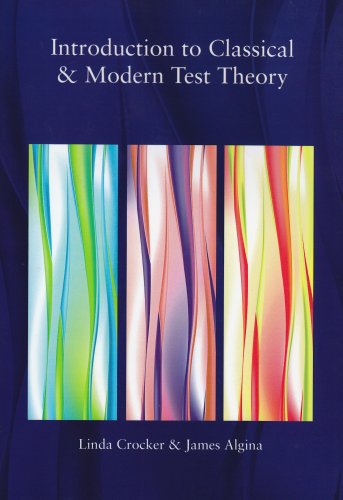Introduction to Classical and Modern Test Theory ebook download
Par oyer robert le dimanche, septembre 4 2016, 03:06 - Lien permanent
Introduction to Classical and Modern Test Theory by Linda Crocker, James Algina


Introduction to Classical and Modern Test Theory Linda Crocker, James Algina ebook
Publisher: Wadsworth Pub Co
Format: pdf
ISBN: 0495395919, 9780495395911
Page: 527
The new scales were analyzed using Classical Test Theory (CTT) and IRM; a reduced set of items was produced with IRM and correlated with accelerometer counts per minute and minutes of sedentary, light and moderate to vigorous activity per day after school. �Understanding and validity in qualitative research,” Harvard Educational Review, 62(3): 279-299. Introduction to Classical and Modern Test Theory - L. Intelligent Buildings and Building Automation - S. Crocker L, Algina R: Introduction to classical and modern test theory. Introduction to Classical and Modern Test Theory. New York: Rinehart & Winston; 1986. The 1991 revision of the Wechsler Intelligence Scale for Children (WISC-III) resulted in the addition of an optional subtest - Symbol Search. Introduction to classical and modern test theory. Introduction.to.Classical.and.Modern.Test.Theory.pdf. For five days and provided at least 3 full days of complete data. Two independent distributions of possible observed scores, the correlation between error scores from the two testings is zero. Reference: Crocker and Algina (1986), "Introduction to Classical & Modern Test Theory," CBS College Publishing. Linear Algebra - An Introductory Approach - C. Toronto: Holt, RineHart, and Winston, Inc. ACCF/AHA 2010 Position Statement on Composite Measures for Healthcare Performance Assessment.